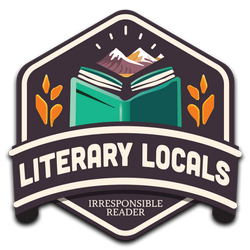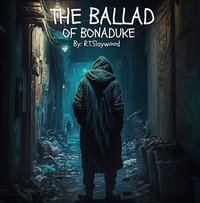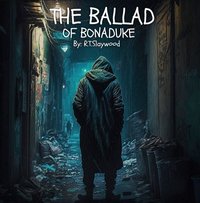Reading back-to-back books featuring a character named Mercy—not to mention writing about one while reading another—is a fun way to trip yourself up. Thankfully the genres are different. But if I start rambling on about the fae or coyotes, you’ll know why. Also, skip to the next sentence or so.
 Shades of Mercy
Shades of Mercy
by Bruce Borgos
DETAILS: Series: Porter Beck, #2 Publisher: Minotaur Books Publication Date: July 16, 2024 Format: e-ARC Length: 352 pg. Read Date: June 27-July 1, 2024

What’s Shades of Mercy About?
Sheriff Porter Beck’s life intersects with a couple of high school buddies for the first time in many years. And both situations should make anyone else from high school leery of running into him.
We open with Beck coming across one of those friends after they’d overdosed. Soon after, a federal investigator recruits Beck to go visit the other one. Jesse Roy has recently moved back to the area, and is renovating his father’s ranch into something that Beck can’t comprehend—it’s just too large, too gaudy, for this area. Cattle ranching is going really well for Jesse (too well?). The night before, something had gone wrong with a test vehicle with the Air Force, and something had fallen on Roy’s prize bull, destroying it. The investigator is here to negotiate a settlement—and it’s not a little one.
But something about the whole deal sets Beck’s B.S.-meter off. He forces the investigator to come clean—someone had hacked an Air Force drone and launched a missile at the cow. It was a targeted hit—but why?
Beck knows if he doesn’t help for the search for this hacker (and they know they’re local, somehow) and get to the root of the problems soon, his county will be overrun by Intelligence officers from all sorts of government agencies.
Oh, and there are wildfires threatening the county on several sides, and a large group assembling to storm Area 51. Just in case it didn’t seem like he had enough going on.
The investigation quickly points at a teenage girl who is serving some time at a teen facility nearby. As hard as it might be to believe. And before he knows it—Beck finds himself dealing with so much more than a hacker.
Comparing Shades of Mercy to The Bitter Past
So, the first book used dual timelines to tell the story—and I was afraid Borgos would try to pull that trick again. I think it could’ve worked, but eventually, his county is going to run out of people who were doing interesting things several decades ago. This time it’s all one timeline (with a little backtracking every now and then, but not much. But we do bounce between a few perspectives, so we still get the advantage of multiple POVs. So he’s able to maintain some of the same feel there.
His deputies are back, but some of them aren’t really seen due to the fires. There’ve been some changes since the last book and it’s good to see that everything isn’t stagnant with this series. We don’t get as much time with them all this time, and that’s a disappointment. Other characters return, too, most of them made me happy and one was a pleasant surprise. I had a more specific sentence there, but decided to remove the names…
The big change is the focus—The Bitter Past is all about the past—what it does in the present, how it can change so much about your life when you learn new things about your own past. Also, the weapons and conflicts of the past.
This one is very present and future-focused. It’s also good to see that Borgos isn’t stuck in one frame of mind.
So, what did I think about Shades of Mercy?
I’m having a hard time talking about this book without saying too much about the content.
In what—I think—was a very nice bit of story-telling is that there were a few things that should make the attentive reader pause and wonder if Borgos is being sloppy. I’m going to try to be vague here, but I’m thinking of some parts of the timelines before the novel started—and some things that happened during the novel that we don’t see first-hand, but see the effects of. I was too invested in the stories to spend time on these myself—I basically shrugged and moved on (not that I noticed everything I should’ve, either). I’m going to give you credit for being perceptive and thoughtful enough to catch these things—then I’m going to reassure you: trust Borgos. Everything gets tied up, everything makes sense, I can’t tell you how often in the last pages I said “Oh, sure—that makes sense,” (I also said “I probably should’ve caught that” about most of those items). It’s really a nice and tidy book.
I’m worried that my last paragraph makes the whole thing seem like a mess. Au contraire. This is a tight thriller—it’s only on a few points that it I was mistaken that he’d left things dangling. The rest of the book is as tightly written as you could hope (which I should’ve realized described the rest, too). There’s a little slowness for a chapter or two, just to bring us back into this world, reintroduce the character, and catch us up on Beck’s life—then we’re off to the races from the moment that Beck is brought to his old friend’s ranch.
The conclusion was just great—exactly what this book (and character) needed.
This book bodes well for the rest of the series that follows—yes, I’d like a “smaller” crime. One that didn’t involve multiple state and federal agencies, for one. Just a matter of Beck and his guys analyzing a crime scene and then figuring out who in their small community could’ve done it. It’d just be more believable than all the federal and military types wanding around all the time. But the way Borgos is dealing with the latter, I’m not sure I care.
There’s enough humor and heart here to take the edge off of things—the tension gets cut, the characters are made more endearing, and the reader can catch their breath before diving into more tension and action.
I wasn’t as wow-ed with this book as I was the first—but I was still impressed, and this book makes me more sure what the following books will be like than I was with The Bitter Past. And it promises to be a very good series. I’m repeating myself, so it’s time to wrap this up. Either with Shades of Mercy or The Bitter Past, you want to get on board this series here at the beginning.
Disclaimer: I received a copy of this book from St. Martin’s Press via NetGalley—thanks to both for this.

This post contains an affiliate link. If you purchase from it, I will get a small commission at no additional cost to you. As always, the opinions expressed are my own.
![]()








 4.
4. 










